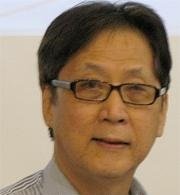按照美国战略和外交政策制定者的构想,华为推出新手机举动根本不应该发生。
在过去的5年,美国特朗普和之后的拜登政府使用各种手段,从经济、地缘政治和工业制造等层面,阻止中国获得先进的半导体、芯片制造设备和超级电脑组件,以削弱中国半导体行业。
美国的头号目标就是中国电讯制造巨头华为,该公司于2012年取代爱立信成为全球最大的电讯设备制造商,并于2018年取代苹果成为第二大智能手机制造商。
美国打压中国的政策,目的在这场号称为全球科技霸主争夺战中阻止中国崛起,而半导体芯片是这场博弈的关键,为了重点打压华为,美国不惜以未经证实和毫无根据的指控,称中国政府可通过华为设备对美国政府进行间谍活动,因此对美国及其盟国的国家安全构成威胁。
美国的打压行动始于2019年特朗普政府将华为列入黑名单,随后美国联邦通讯委员会将华为列为国家安全威胁,并命令美国电讯运营商于2020年将华为设备从其网络中撤下。
在美国压力下,澳洲、日本、英国、加拿大和瑞典也加入禁止华为5G设备的行列。但由于世界绝大多数国家拒绝跟随,拜登政府于是进一步加大了打击中国和华为半导体制造发展的力度。
在美国打压中国半导体行业,欲使中国自给自足的时间表延后十年或更长时间的总体规划中,台湾、荷兰和日本也受到干扰,美国阻止这些国家向中国出口先进芯片制造设备,以确保中国自给自足的大计破灭。
2022年10月,拜登政府对北京科技产业的核心引爆了所谓的“热核炸弹”。宣布了新的出口禁令,其中的措施包括,切断中国与世界任何地方使用美国工具生产特定半导体芯片的联系。与此同时,这些规则也包括,任何参与在中国开发或生产特定芯片(包括军用芯片)的“美国人员”必须先获得许可。 一位分析员表示:
“随著拜登的新制裁,所有美国网络区块、组件和服务供应商都一夜之间离开——从而切断了(对中国)的所有服务。长话短说,目前所有处于顶端的半导体公司都面临全面断供、美籍员工辞职、运营立即瘫痪的局面。这就是歼灭的手段:中国的半导体制造业一夜之间化为零。覆灭,没有生存的机会。”
突破创新界限
华为最新推出了的Mate系列智能手机,在科技界和政界引起广泛反响。此次华为低调推介其新手机,恰好也是美国商务部长雷蒙多访华期间。对于这款新手机,拆解手机内部结构的技术分析员对此表示好评,他们称赞华为突破了创新的界限,以实惠价格为用户提供尖端科技。
这款智能手机和互联网技术页面功能令人印象深刻,引起热议──其强大的麒麟芯片、曲面OLED显示屏、三重后置摄像头系统、13 兆像素前置摄像头和可实现安全准确人脸识别的3D深度摄像头、5G速度和快速充电功能。至于其潜在的6G功能也好评如潮,该功能可实现卫星通讯和万物互联。其可能是第一款能够在紧急情况下,无需通过传统网络为用户提供支援的主流智能手机。在灾难期间,这样的功能,对于美国及其盟友的社会也是很有用的。
一些分析师估计,华为Mate 60和Mate 60 Pro的销量可达到1500万部或更多,华为得以安然度过现代商业史上由一个国家或多个国家集团针对单个企业实施的最严厉制裁。华为的未来前景比以往任何时候都更加光明。
华为生存下来,是对美国企图阻挠中国发展和势力,不仅在军事领域而且在经济和技术领域造成损害的一项挫折。美国对华为和中国实施制裁的经历说明,当面对坚定的对手时,制裁可能会适得其反。就华为而言,制裁迫使该公司减少对美国及其盟国的依赖,并促使华为与中国芯片制造商中芯国际成功生产出,原本中国预计至少5-10年内不可能生产出的7纳米超级芯片。
目前看来,美国非但没有专注于发展其科技基础以应对华为的挑战,反而决心通过更多肮脏手段对华为实施更多制裁。对最近美国对华为手机芯片展开调查一事,中国外交部发言人毛宁在新闻发布会上被问及时就如此回应:
“我们反对将贸易和科技问题政治化,反对过度延伸和滥用国家安全概念。美国已滥用国家力量打压中国企业。”
“制裁和遏制阻止不了中国的发展,只会增强中国自立自强、科技创新的决心和能力。”
与此同时,华为新产品发布也对美国股市带来冲击。在9月8日星期五那一天,美国、荷兰和台湾的电讯公司市值就因而蒸发了数十亿美元,其中无线芯片制造厂商高通股价下跌了6.7%,半导体设备系统厂商ASML下跌了4.6%,芯片制造商台积电和博通,也各别下滑了3.2%和2.4%。
至于美国科技巨头苹果公司,分析员预测华为新产品可能导致苹果iPhone销量大跌多达1000万部。
林德宜《华为新动向:中国对抗美国及其盟友的重大胜利》原文:Huawei Mate Latest : Significant Victory Against US and Allies
The launch by Huawei of its latest handphone should never have happened according to the planning of US strategic and foreign policy makers.
During the last five years the Trump and Biden administrations have tried every trick in the economics, geo-political and industrial manufacturing book and more to cripple the Chinese semiconductor industry by blocking its access to advanced semiconductors, chip-making equipment, and supercomputer components.
The number one target has been Huawei, China’s telecommunications manufacturing giant which in 2012 overtook Ericsson as the world’s largest telecommunications equipment and in 2018 displaced Apple as the second larget manufacturer on smartphone.
The target of US policy to cripple China in what has been labelled as the battle for global technological superiority in which semiconductor chips are regarded as the game changer has focused on US efforts to take Huawei down with unproven and unfounded charges that its equipment would enable the Chinese government to conduct espionage against the US government and was therefore a threat to US and its allies’ national security.
These efforts began with the blacklisting of Huawei by the Trump administration in 2019 followed by the Federal Communications Commission designation of Huawei as a national security threat and the order to US carriers to pull Huawei equipment from their networks in 2020.
Under US pressure, Australia, Japan, the UK, Canada and Sweden joined in banning Huawei 5G equipment. But as the great majority of the world’s nations refused to follow suit, the Biden administration escalated its drive to beat back China’s and Huawei’s semiconductor manufacturing development.
Taiwan, Netherlands and Japan were harassed into blockage of exports of advanced chip making equipment to China in the US masterplan to add a decade or more to the timeline for China’s semiconductor self-sufficiency; and to ensure that China's self-sufficiency ambition implodes.
Biden’s ‘Thermonuclear Bomb Against China’s Semiconductor Industry
In October 2022, the Biden administration set off what has been described as “a thermonuclear bomb” at the heart of Beijing’s technology industry. New export rules were announced which included a measure to cut China off from specific semiconductor chips made anywhere in the world with US tools. At the same time, as part of these rules, "U.S. persons" that supported the development or production of certain chips in China, including those for military uses, were required a license to do so. According to one analyst:
With the new Biden sanctions, all American suppliers of IP blocks, components, and services departed overnight – thus cutting off all service [to China]. Long story short, every advanced node semiconductor company is currently facing comprehensive supply cut-off, resignations from all American staff, and immediate operations paralysis. This is what annihilation looks like: China’s semiconductor manufacturing industry was reduced to zero overnight. Complete collapse. No chance of survival.” (Posted at Jordan Schneider’s Twitter account @jordanschnyc)
Huawei and China Fightback
Killing off Huawei?
In a news story that is still reverberating around the technology and political world, the company recently launched its latest Mate line of smartphones. The low key unveiling coincidentally took place during the visit of US commerce secretary, Gina Raimondo. Favourably received by technical analysts who took apart the innards of the handphone, they have praised Huawei for pushing back the boundaries of innovation and delivering cutting edge technology at affordable prices to users,
The smartphone and technology pages of the internet have been buzzing over its impressive features - powerful Kirrin chipset, curved OLED display, triple rear camera system, a 13-megapixel front camera and a 3D depth camera for secure and accurate face recognition, 5G speed and fast charging capabilities. Rave reports have also emerged of its potential 6G feature which enables satellite communication and the Internet of Everything. It is possibly the first mainstream smartphone that can support users without access to conventional networks during an emergency. Such a feature would be even useful to communities from the US and its allies during a catastrophe.
With Mate 60 and Mate 60 Pro sales estimated by some analysts at 15 million or more, Huawei has been able to survive what may be the most sanctions in the history of modern business put up by a country or group of countries against a single enterprise. Its future prospects look brighter than ever.
Huawei’s existence is also a body blow to US attempts to thwart China’s development and capabilities, and to inflict damage not only in the military sector but also in the economic and technological arenas. This United States experience of sanctions against Huawei and China illustrates how sanctions can backfire when faced by a determined opponent. In the case of Huawei, sanctions have forced the company to reduce its reliance on the US and its allies as well as pushed the company into partnership with China chipmaking manufacturer, Semiconductor Manufacturing International Corporation, to develop a 7-nanometer superchip that the Chinese were not expected to manufacture for another 5-10 years at least.
For now it appears that the US instead of focusing on developing its technological base to meet the Huawei challenge appears determined to play dirtier by applying even more sanctions on the company. At the latest press briefing held on the subject of US reaction to Huawei, a spokesperson for the Chinese Foreign Ministry, Mao Ning, was asked to comment on the US government's official probe into the advanced Chinese-made chip in Huawei's latest smartphones.
The response: "We oppose politicising trade and technology issues and overstretching and abusing the concept of national security. The US has abused state power to suppress Chinese companies".
"[S]anctions and curbs will not stop China's development. They will only strengthen China's resolve and capability to seek self-reliance and technological innovation".
Meanwhile, the US stock market is being impacted by the economic costs of Huawei's latest product launch. With that as a backdrop, US, Dutch and Taiwanese telecommunication companies have lost billions in trading losses as of Friday, 8 September with wireless chips provider Qualcomm (QCOM -0.24%) tumbling 6.7%, semiconductor equipment systems provider ASML Holding (ASML -1.56%) slumping 4.6%, chipmaker Taiwan Semiconductor Manufacturing (TSM -0.46%) falling 3.2%, and chipmaker Broadcom (AVGO 0.06%) dipping 2.4% by 1:21 p.m. ET.
As for US tech titan Apple, analysts have predicted that the firm could lose as many as 10 million iPhone sales to Huawei.
要看最快最熱資訊,請來Follow我們 《東方日報》WhatsApp Channel.


















